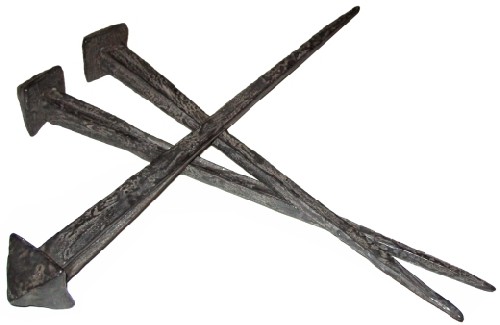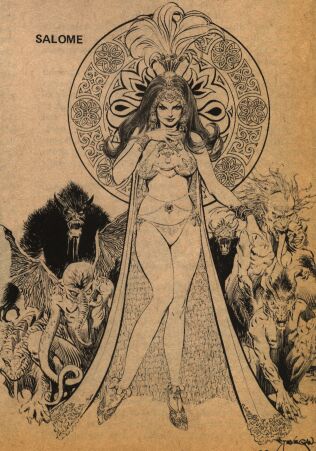Conan Agonistes
Friday, April 10, 2009
posted by Steve Trout
 Print This Post
Print This Post

“Conan in agony, helpless, close to death –crushing the vulture’s neck in his teeth-enduring the ordeal of the felling of the cross –impatiently ripping the nails out of his feet with his mangled hands –holding onto the saddle on a frenzied mount… the episode dominates the story and the series. Better than any other scene, it underscores Conan’s barbaric vitality and indomitable soul. The scene overshadows the remainder of the story — and “A Witch Shall Be Born” is an excellent story. It is Conan at his best — defeated and condemned to a hideous death, fighting back through his barbaric strength and iron-willed determination, ultimately triumphant in the final battle, dooming his enemies to a just vengeance.”
Karl Edward Wagner, “Afterward,” The People of the Black Circle
While not every critic agrees that the story is excellent, all seem to agree that the crucifixion scene is hard to forget. In the same piece, Wagner remarks that even after forty years, Manly Wade Wellman recalled the scene vividly.
This seems an apt day to revisit Conan’s crucifixion. By the time Howard wrote the story, Wright had recognized the growing popularity of Conan by putting him on the cover spot with “Queen of the Black Coast,” “The Devil in Iron” and “The People of the Black Circle” and had now run out of stories to run. Howard could start to experiment a little, and he did.
The first thing that is different is that Conan only appears in a few key scenes. Much of the story is epistolary, that is, told by other observers, in letters and oral accounts, something Howard used occasionally elsewhere (like in “The Dead Remember” and “The Riot at Bucksnort” but not in a fantasy with a main character like Conan. It keeps the story short where it could have been a lengthy novella.

Another thing one notices is the supreme sadism of the villains. Salome is marked by her hateful laugh, expressing “cruel mirth,” and Constantius is sardonic and cynical in his cruelty. They leave a broad swath of death, torture and rape in their short time on stage. But even before the crucifixion, there is a hint of Bible influence with the witch named Salome, and it is clear she is of the same line that will someday produce the Biblical Salome:
“[When] the mountains of ice have roared down from the pole and ground the civilizations to ruin, and a new world has risen from the ashes and dust –even then there shall be Salomes to walk the earth, to trap men’s hearts by their sorcery, to dance before the kings of the world, and see the heads of the wise men fall at their pleasure!”
Crucifixion was thought to have originated with the Persians, and was widely used by the Greeks (including Alexander the Great) before being adopted by the Romans, with whom it is chiefly associated. Thus it is not coincidental that the man who is responsible for putting Conan on the cross has such a Roman-sounding name. Crucifixion was a slow, agonizing form of execution. Depending on conditions, you could last hours or days. You could die of blood loss, shock, or dehydration. There is only one recorded survivor of crucifixion — the historian Josephus recounts that he convinced the emperor Titus to take three of his friends down from their crosses, and while two of them expired, one did not.
Conan is likely to live for days, says Constantius, were it not for the vultures. As Conan glares with “unquenched fire” and spits, Constantius gives him a mocking farewell. Conan is left to ponder, and to hate. And as the vultures start to peck at him, fight back the only way he can — with his bare teeth.
In the The Bloody Crown of Conan afterword “Hyborian Genesis Part II” Patrice Louinet remarks that in this story Conan has now become a superhuman character. This is arguably the case, and so for the story to have power and drama he must now be subjected to superhuman stresses. In “Witch” we see Howard take this principle and run with it. Battling one against a hundred, the dead piling up thigh-high around him; then hanging on a cross, and surviving its fall; shoving the intriguingly named Djebal aside to pull the massive nails out of his feet with his own swollen hands — this is all stuff no ordinary human could do.
Is Howard putting Conan up there with the Son of God in this scene? Is he giving us a John Lennon “we’re bigger than Jesus” message? I really doubt it — I think he was just using a historical prop that happens to be associated with Jesus. But people will always wonder.
